Whitehot Magazine
October 2025
"The Best Art In The World"
"The Best Art In The World"
October 2025
LuYang: The Great Adventure of Material World @ Museum of the Moving Image
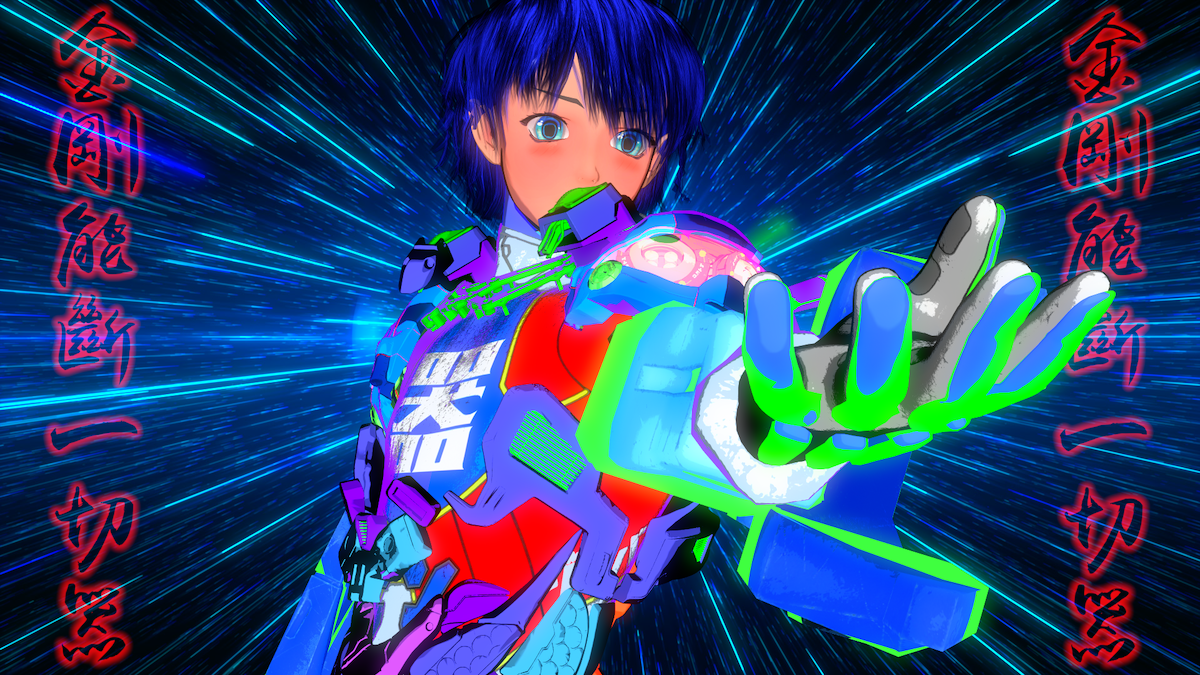 The Great Adventure of Material World by the artist
The Great Adventure of Material World by the artist
By PETER KELLY October 18, 2025
I made a point to go to NYC's the Museum of the Moving Image on a Thursday afternoon in the hopes that I would be able to play through LuYang’s The Great Adventure of the Material World (2019) in its entirety, relatively undisturbed. I missed postings online advertising the museum’s free Thursday afternoon admissions policy and shortly after parking myself in front of one of two arcade-style game systems, installed in the museum’s Jane Henson Amphitheater, I had to pretend not to notice the growing line of schoolchildren forming behind me. As a youngest sibling myself, I fought my knee-jerk impulse to pass the controller on, taking instead the oldest sibling's default of unilateral controller possession and utilizing the padded headphones provided to let the ambient score (masterfully produced by 2080) overpower the exasperated groans from a number of younger museum goers. Luckily, idiosyncratic dialogue, phrenetic references, and a meditative, rhythmic gameplay made for an engrossing experience. And for those waiting for a turn on the PlayStation controller, a single-channel playthrough is projected on repeat–the 2020 recording is also available in its entirety (as is most of LuYang’s oeuvre) through his publicly accessible Vimeo account.
The exhibition occurs concurrently as DOKU! DOKU! DOKU!: samsara.exe, an exhibition featuring LuYang’s Doku series (two film screenings and an associated installation are included) at Amant in East Williamsburg. The Brooklyn exhibition is alongside the art-fashion duo Women’s History Museum and French multidisciplinary artist Mimosa Echard. In Queens, the work is displayed between Jim Henson and William Friedkin.
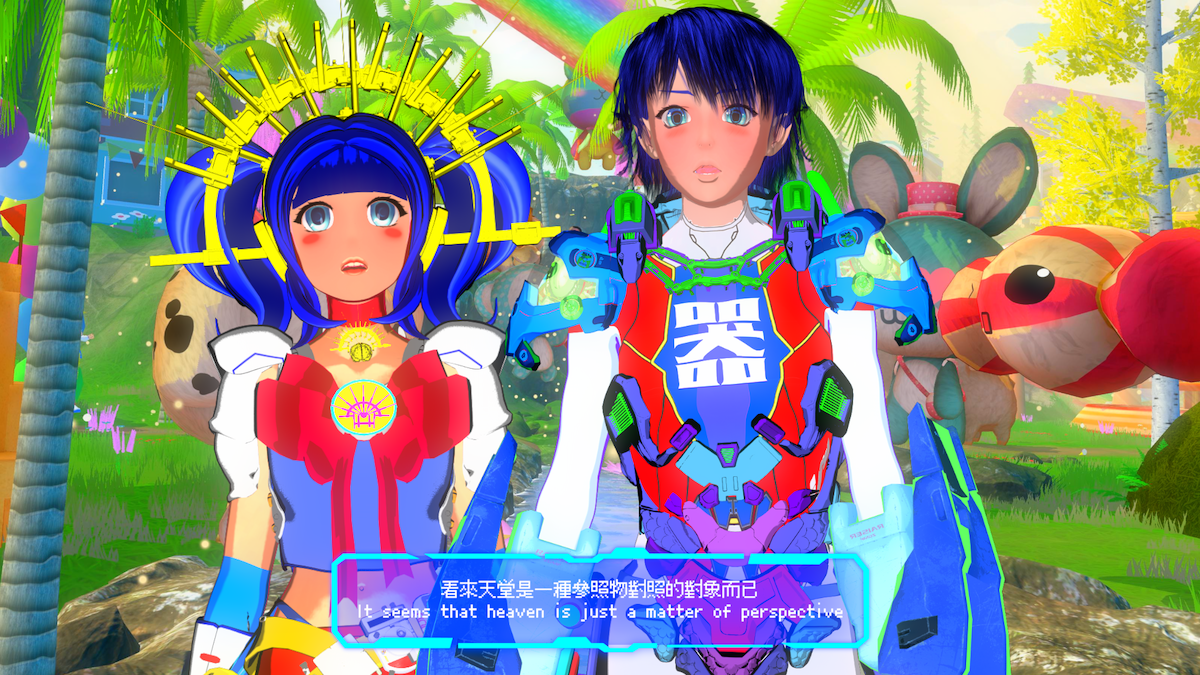 The Great Adventure of Material World by the artist
The Great Adventure of Material World by the artist
The contrasting program pairings, respective crowds, and displays of the sister exhibitions are illustrative of an expansive breadth of references: core tenets of Buddhist philosophy are presented through a digitized, Boschian mosaic of anime, video games, and pop culture. Video game as media choice echoes this thread: as avant-garde as it is populist. A former student of Zhang Peili (the founding chair of the New Media department at the China Academy of Art and a central figure of the ’85 New Wave Movement),[1] the artist’s media choices instinctively incorporate available technologies into installation-based film work. For example: To capture the Balinese dance sequences of the Doku series, Chinese facial motion capture company FACEGOOD became a collaborator. The specialized technology allowed him to record, archive, and animate the Legong, Baris, and Kebyar dances renowned in part for their dramatic facial and ocular movements.[2] The cutting edge technology contained in the game’s programming is complemented in the nostalgic simplicity of an arcade console, PlayStation controller, and well-used headphones. The straightforward and familiar installation allows the vibrant content of the game to become the exhibition’s major focal point.
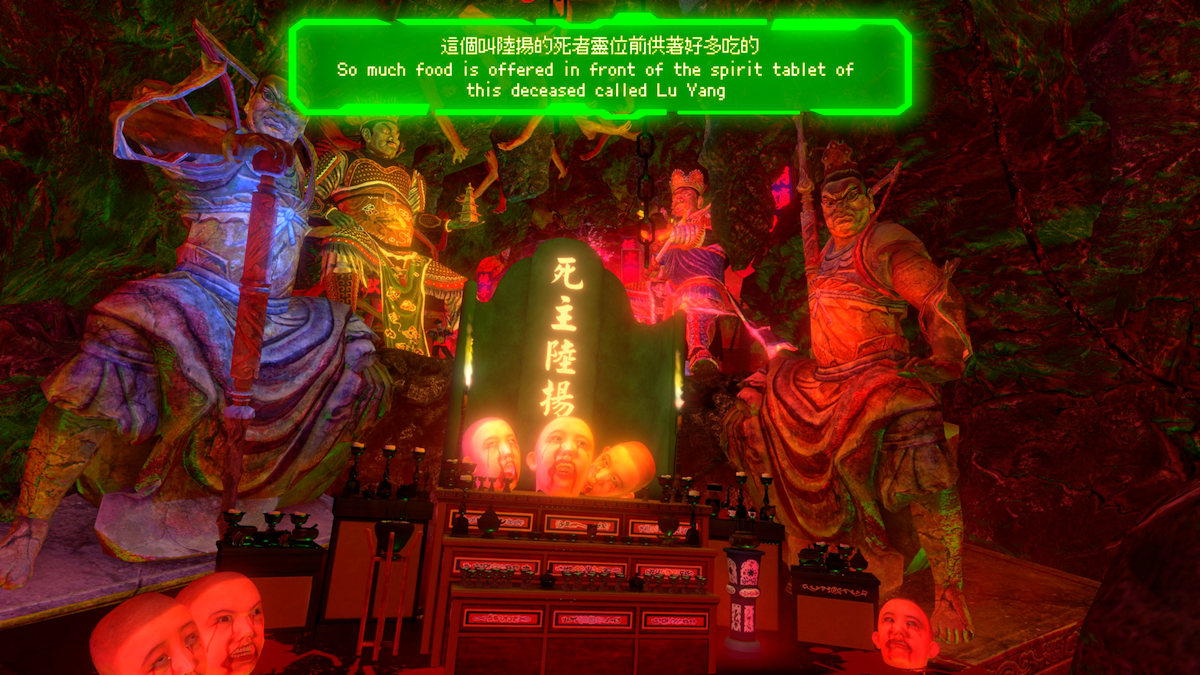 The Great Adventure of Material World by the artist
The Great Adventure of Material World by the artist
The Great Adventure of Material World’s protagonist (dubbed the Material World Knight) progresses through the various realms of reality within a Buddhist cosmology. While the game feel is evocative of an array of franchises–Gundam, Shin Megami Tensei, Final Fantasy, Grand Theft Auto–it maintains its own uniquely cacophonous aesthetic landscape. Barraging visuals are a vessel for contemplation: as you move through each level by a process of birth, death, and reincarnation it becomes increasingly evident that the games’ countless antagonists are superfluous and don’t need to be defeated, the varied controls are somewhat inconsequential, and many NPCs can not be interacted with at all. Unremitting and illusory images construct a broader metaphor for our existence in saṃsāra—a message best summarized in a line of disembodied dialogue from the game’s penultimate stage: “The game world in the player’s eyes is an illusion created conjointly by a proper frame rate of the computer monitor, your eyes and brain. Everything in the game and in this Material World is the result of temporary conjunctions.”
Such poetic, tongue-in-cheek dialogue is the driving force of the game. At times it feels as though the JRPG model is a façade for a text-based adventure. Each line of dialogue poses declarations, ponderances, non sequiturs, and open-ended questions–all probing the nature of existence. In the Heaven level, a new character (like many NPCs she is drawn from an earlier work by the artist, in this case the 2017 film Electromagnetic Brainology Brain Control Messenger) poses the question: ”Player, what do you think heaven will be like?” The game’s vision of heaven is an idyllic environment with all the jewel tone tranquility of Sonic Adventure 2’s “Chao Garden.” While other levels are populated by humans, titans, and demons, this level’s residents are as colossal as they are hyperbolically kawaii (frolicking alpacas, smiling peppermint candy, heart-eyed rabbits, etc.). The cartoonish quality of this level does nothing to negate the poignancy of its winding dialogue–questioning the nature of paradise and highlighting its complete subjectivity. When the player enters the Hell level, they experience similar threads of dialogue on torture, abjection, fear and their subjectivity. Towards the end of the level the player comes across a spirit tablet dedicated to a beheaded LuYang, surrounded by lurching demons with composite forms. As previously mentioned, though they are unnerving, they are basically superfluous and exist for visual impact. As it becomes apparent that one does not need to fight to survive, the game eases into more of a guided meditation.
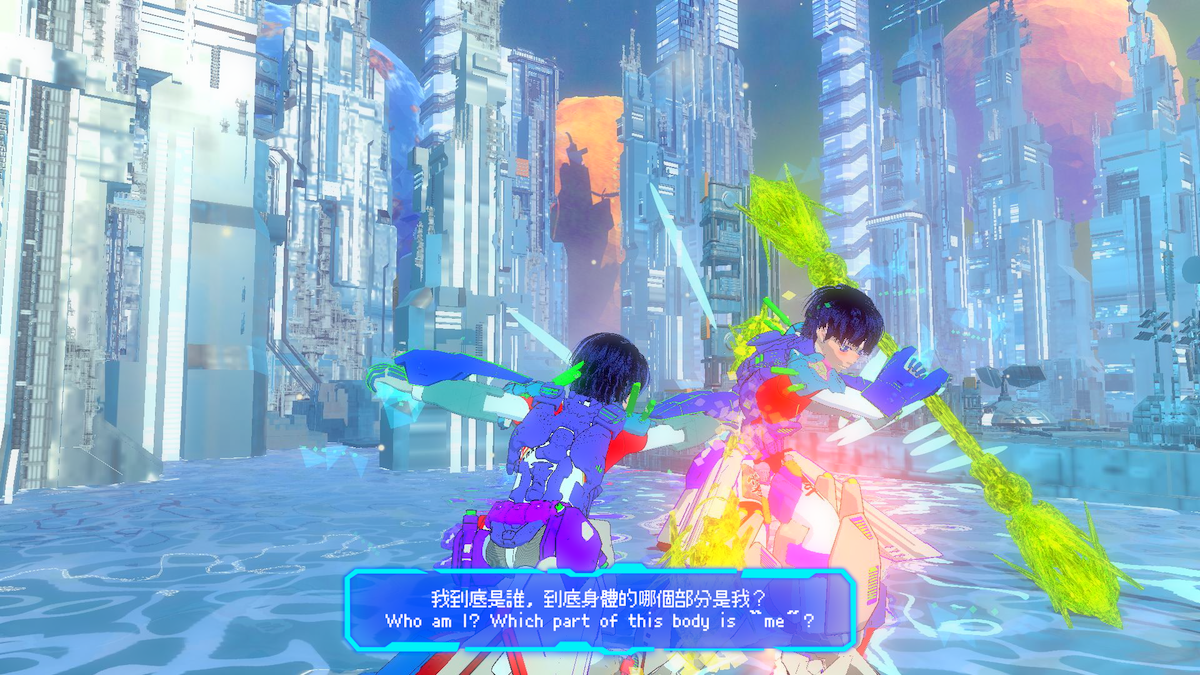 The Great Adventure of Material World by the artist
The Great Adventure of Material World by the artist
The only essential boss battle is at the game’s conclusion. The Material World Knight must fight himself to the death using Indra’s Vajra. When either version of the self takes a hit, both take damage, until only the protagonist is left standing. This echoes the cycle of life and death reiterated throughout the game: In a level titled The Delusional World, you must jump into a burning MRI machine to advance to the Heaven level; to complete the Hell level you must fly directly through the wheel of life; LuYang depicts his own death countless times throughout the game. This unusual final boss battle and focus on the impermanence of self visualizes anātman, the Buddhist doctrine that asserts that there is no fixed, essential, “self.”[3] After exploring the realms of reality to (for lack of a better word) “win” the game you must relinquish the self, completing the message of the game’s Buddhist metaphorical framework.
[1] “Curated by Zhang Peili – Lu Yang: The Anatomy of Rage,” UCCA Center for Contemporary Art, 2011, https://ucca.org.cn/en/exhibition/curated-zhang-peili-lu-yang-anatomy-rage//.
[2] LuYang, “BMW Art Journey – Bali Motion Capture,” LUYANGASIA, accessed October 16, 2025, http://luyang.asia/2020/11/20/bmw-art-journey-bali-motion-capture/.
[3] The Editors of Encyclopaedia Britannica. "anatta." Encyclopedia Britannica, December 5, 2007. https://www.britannica.com/topic/anatta.
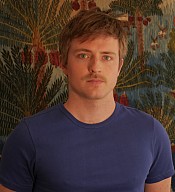
Peter Kelly
Peter Kelly is a writer and curator who lives and works in New York City.
view all articles from this author








